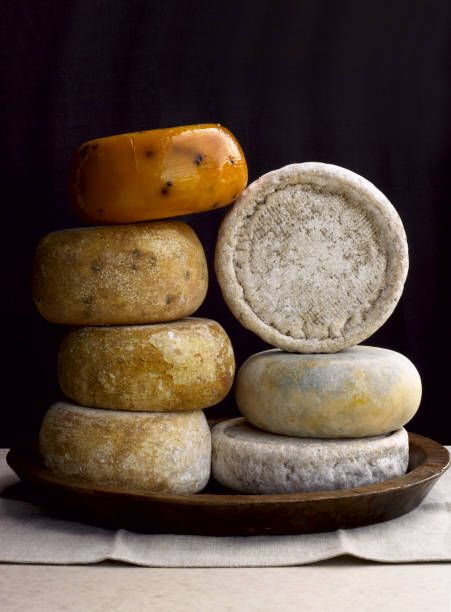Bad news for gourmets: Camembert, Brie, Roquefort and other blue cheeses with mold are on the verge of extinction, or rather the microorganisms that create it, says WomanEL.
ContentReasons for the disappearance of cheesesIs it possible to save your favorite delicacy
According to The Washington Post, such disappointing results were shown by a study by the French National Center for Scientific Research. For gourmets, French cheeses are delicacies, but for scientists – an entire ecosystem consisting of a set of fungi and bacteria that can transform milk fats and proteins into hundreds of different compounds.
 Ecosystem of fungi and bacteria. Source: pinterest.com
Ecosystem of fungi and bacteria. Source: pinterest.com
Reasons for the disappearance of cheeses
Fungal strains in cheese can reproduce sexually or asexually. The first one takes longer, which is why the food industry uses the second option more. The asexual method allows you to obtain cottage cheese that is identical in taste and appearance. However, because of this, the strain begins to degenerate.
The dependence of cheese production on one type of mold may cause their extinction, scientists say. Namely, Camembert and Brie are now produced using the same type of mold – Penicillium camemberti. This fungus cannot reproduce on its own, so it has to be cloned again and again. This means that each cheese is produced with a genetically identical strain.
 Camembert, Brie and other French cheeses are endangered. Source: pinterest.com
Camembert, Brie and other French cheeses are endangered. Source: pinterest.com
According to Jeanne Ropars, an evolutionary biologist at the National Center for Scientific Research (CNRS), the lack of genetic diversity makes the fungus vulnerable to pathogens and changes in the environment. Until recently, Camembert and Brie had shades of blue, orange and green – the result of different strains of mold that were used to make cheeses.
Because each mold is precise copies of each other, any unpleasant disease can destroy the entire population, Ropars notes.
Is it possible to save your favorite delicacy
There is a way to save exquisite French cheeses. To change the situation for the better, scientists advise introducing new strains. This will ensure diversity and sexual reproduction between individuals with different genomes. But this approach can lead to changes in the product’s taste, smell, appearance and other unexpected transformations.
We previously wrote about 6 popular types of cheese and what products will enrich their taste.
